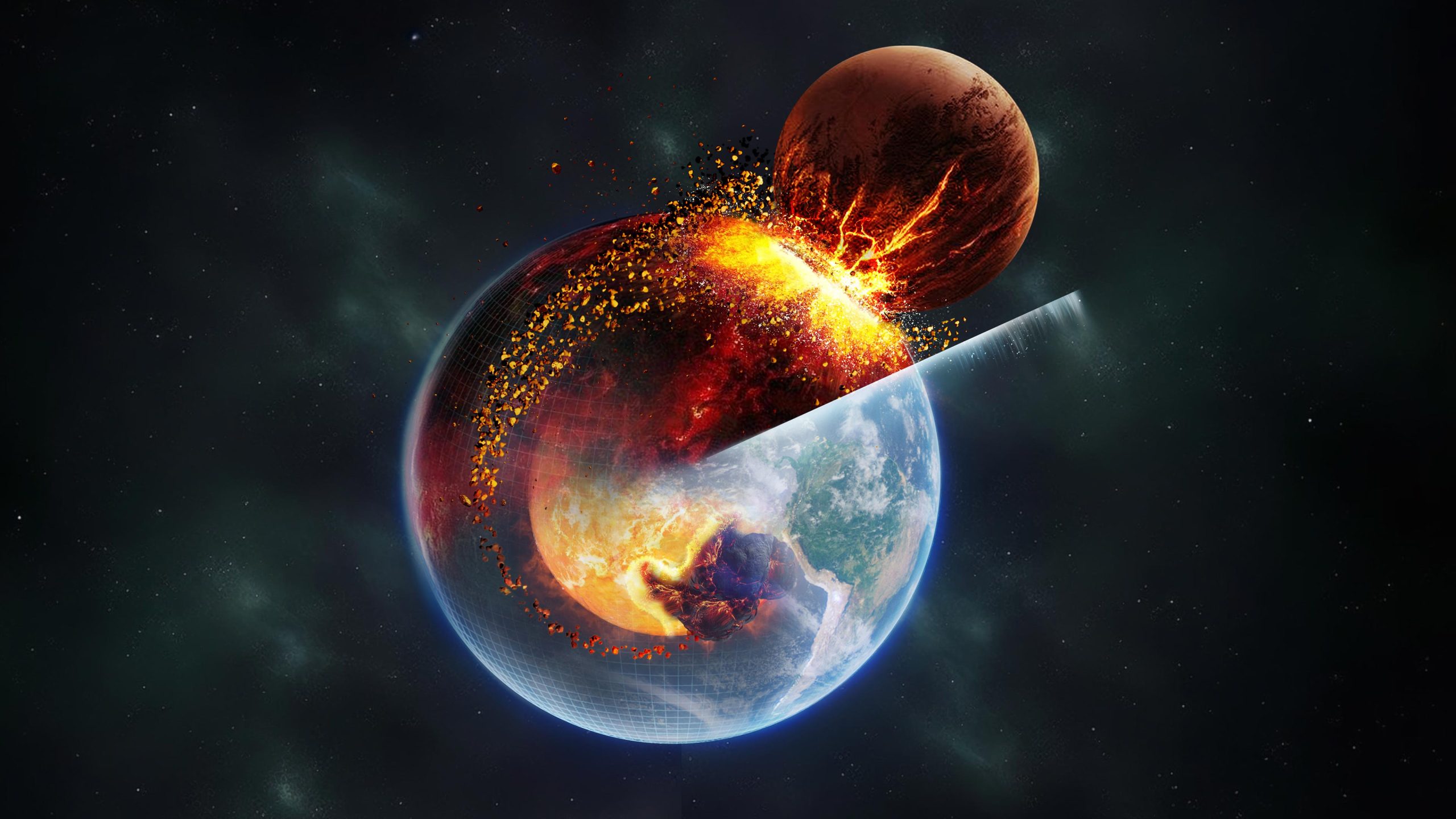The deep Earth mantle is home to large low-velocity provinces (LLVPs) that have long puzzled scientists. However, a recent study led by Caltech reveals that these LLVPs may hold the key to understanding the ancient planet Theia and its collision with Earth, which ultimately resulted in the creation of the Moon.
The existence of the LLVPs was first discovered in the 1980s when two enormous blobs of unique material, larger than the Moon, were identified directly beneath the African continent and the Pacific Ocean. These blobs have distinct compositions compared to the surrounding mantle.
Uncovering the Origins of the LLVPs
Where did these intriguing structures, known as large low-velocity provinces (LLVPs), come from? The recent investigation from Caltech proposes that they are remnants of Theia, an ancient planet that catastrophically collided with Earth billions of years ago. This groundbreaking finding not only sheds light on the origin of the Moon but also resolves the mystery of Theia’s fate.
The paper, published in the journal Nature on November 1st, introduces a comprehensive study led by Caltech researchers. According to their research, an impact between Earth and Theia during the formation of the Moon resulted in the primordial remnants of Theia forming the LLVPs, while the leftover debris coalesced to create the Moon.
The research was spearheaded by Qian Yuan, O.K. Earl Postdoctoral Scholar Research Associate, working alongside renowned scientists Paul Asimow and Michael Gurnis. The team used seismic wave measurements to initially identify the LLVPs. Seismic waves travel at different speeds depending on the materials they pass through, and researchers noticed significant variations deep within the Earth’s structure, particularly in the seismic wave patterns emanating from two large structures near the core. These structures are believed to have a high iron content, making them denser than the surrounding mantle, hence the name “large low-velocity provinces.”
Breakthroughs in Research Methodology and Findings
A pivotal moment came during a seminar conducted by Mikhail Zolotov, an esteemed professor at Arizona State University, where Yuan had a revelation. Zolotov explained the giant-impact hypothesis while Yuan made a crucial connection between the Moon’s iron-rich composition and the unknown whereabouts of the impactor, Theia.
Yuan teamed up with multidisciplinary collaborators to create various simulations exploring Theia’s composition and its collision with Earth. The simulations supported the hypothesis that the LLVPs and the Moon were formed as a result of the collision. Some of Theia’s mantle material fused with Earth’s mantle, eventually forming the LLVPs, while remnants from the impact coalesced to create the Moon.
Implications and Future Research
The research findings raise intriguing questions about why the remnants of Theia clumped together into the LLVPs instead of dispersing uniformly throughout Earth’s formation. The team’s simulations revealed that during the impact, a significant portion of the energy remained in the upper mantle, leaving the lower mantle cooler than previously estimated. This allowed the iron-rich material from Theia to remain relatively intact as it settled to the base of the mantle, similar to colorful masses in a turned-off lava lamp. Had the lower mantle been hotter, the material from Theia would have more extensively mixed with the surrounding mantle.
Future research will focus on investigating the influence of Theia’s heterogeneous material within Earth’s interior processes, such as the onset of subduction, the formation of the first continents, and the origins of the oldest surviving terrestrial minerals.
This groundbreaking study not only provides insights into the origins of Earth’s LLVPs but also resolves the longstanding mystery of the Moon’s formation. Furthermore, it opens up a new realm of research into the effects of Theia’s remnants on Earth’s early evolution. Theia’s ancient residues within the Earth present a fascinating opportunity to study the earliest stages of our planet’s development and uncover the secrets of its geological processes.
Reference: “Moon-forming impactor as a source of Earth’s basal mantle anomalies” by Qian Yuan, Mingming Li, Steven J. Desch, Byeongkwan Ko, Hongping Deng, Edward J. Garnero, Travis S. J. Gabriel, Jacob A. Kegerreis, Yoshinori Miyazaki, Vincent Eke and Paul D. Asimow, 32 October 2023, Nature.
DOI: 10.1038/s41586-023-06589-1
Qian Yuan is the first author. In addition to Yuan and Asimow, the additional Caltech coauthor is Yoshinori Miyazaki, Stanback Postdoctoral Scholar Research Associate in Comparative Planetary Evolution. Additional coauthors are Mingming Li, Steven Desch, and Edward Garnero (PhD ’94) of Arizona State University (ASU); Byeongkwan Ko of ASU and Michigan State University; Hongping Deng of the Chinese Academy of Sciences; Travis Gabriel of the U.S. Geological Survey; Jacob Kegerreis of NASA’s Ames Research Center; and Vincent Eke of Durham University. Funding was provided by the National Science Foundation, the O.K. Earl Postdoctoral Fellowship at Caltech, the U.S. Geological Survey, NASA, and the Caltech Center for Comparative Planetary Evolution.
Reference


